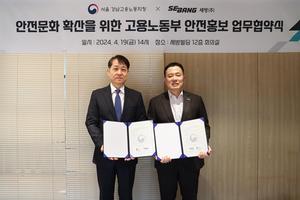 |
There are more than 30,000 cardiac arrest patients in Korea every year. It is known that only 5% of patients recover without brain function damage. If cardiopulmonary resuscitation restores heart function in cardiac arrest and the target body temperature is maintained, brain damage can be greatly reduced to minimize disability or aftereffects.
In the case of targeted temperature maintenance treatment, the main focus is on patients who are still unconscious even if their heartbeat returns to CPR after cardiac arrest. There are two main ways to reach the target body temperature. It is an invasive method and a non-invasive method. The invasive method is a method of injecting fluid into a vein. In the case of the non-invasive procedure, the patient's body temperature is gradually lowered using a gel pad surface cooling device. Body temperature should be maintained between 32 degrees and 36 degrees for at least 24 to 72 hours.
 |
| pic source-https://www.usatoday.com/ |
Next is CPR, which is the most important for acute cardiac arrest. The golden time for cardiac arrest patients is less than four minutes. How does CPR work? There are four orders to perform CPR. Make sure the patient is conscious, and if he's not, prepare for trial:
(1) Lay the fallen person on a flat ground, and then raise a hand sandwiched between both nipples of the fallen person.
(2) Straighten your arms and press the person's chest. When you do pressure, press the count to a depth that fits about 5 cm, and after 30 chest compressions, do two rounds of artificial respiration.
(3) When you do artificial respiration, turn the patient's head back, pull the chin to open the airway, cover the patient's nose with your hands, and blow the wind with your mouth twice a second until your chest swells.
If you resist artificial respiration, do it without stopping just chest compressions. Before 119 paramedics arrive, repeat 30 chest compressions and two rounds of artificial respiration without stopping. If the patient's consciousness is confirmed, check whether breathing is normal and lie on the side to prevent airway obstruction. Remember, you can save someone's life.
Resource :
“심정지 환자 신경학적 예후 개선하려면 치료 여건부터 개선돼야” :: 중앙일보헬스미디어 (joins.com) , 심정지 발생 시 심폐소생술 하는 순서와 대처방법 - [심정지 골든타임] (tistory.com)
이지율 강남포스트 학생기자 webmaster@ignnews.kr
<저작권자 © 강남포스트, 무단 전재 및 재배포 금지>

 고용노동부 강남지청-세방(주), 안전문화 확산 위한 업무협약 체결
고용노동부 강남지청-세방(주), 안전문화 확산 위한 업무협약 체결


